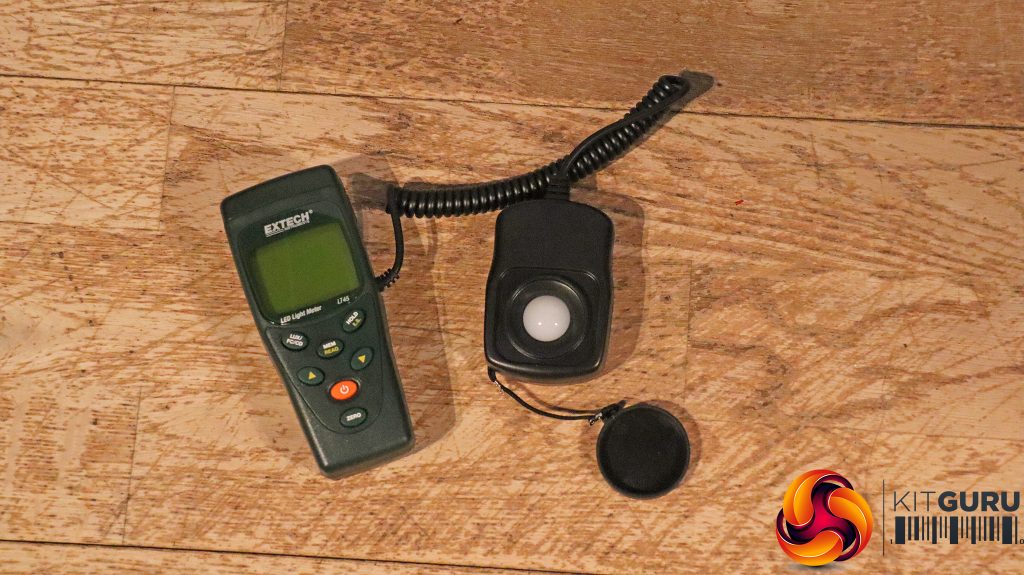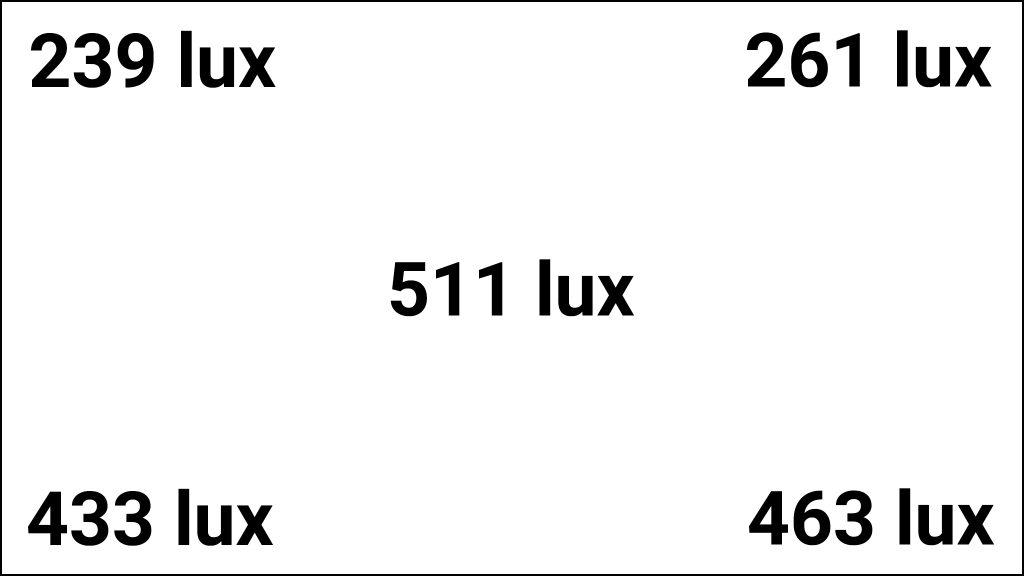For testing, we hooked the Philips GamePix 900 up to a Dell XPS 17 notebook, which has NVIDIA RTX 3060 graphics on board and a screen with a 3,840 x 2,400 resolution, making it a great platform for testing a 4K projector. We set the screen to 3,840 x 2,160 for the GamePix, which is this projector's native resolution. An HDMI connection (with a USB C adapter on the notebook) attached the Dell to the projector. A 100in floor-standing screen completed the testing setup.
We wanted to assess maximum real-world brightness of the projector, so we enlisted an Extech LT45 LED light meter to measure this. With the projector 200cm from the screen, we filled the screen with a white page and pushed the brightness up to maximum and then recorded the level of illumination in the four corners of the screen and the middle. All tests were performed in an otherwise entirely dark room.
Projectors are a new area for KitGuru to review so we don't have comparisons for these results yet. However, it should be underlined that the ANSI Lumens rating of 1,000 for the GamePix 900 is not the lux rating you should expect on a projection screen. It's the light output at the bulb. This is lower than some projectors we're familiar with, but also means that the GamePix can offer 30,000 hours of LED lifetime, which is on the higher side. To put that in perspective, it equates to over 3.4 years of continual usage, which should effectively mean the LED light source will last the lifetime of your usage of this projector. Considering that projector bulbs used to go all the time a few years ago, and they can be hard to replace, this is reassuring.
For our illumination test, you'll notice that the screen is brighter at the bottom than the top, which will mostly be because our projector stand was a lower than the edge of the screen and pointing upwards. The rating to take most notice of is the middle one of 511 lux. It's also worth mentioning that at maximum brightness the screen image was very washed out and you would never want to use it at that level.
At default half brightness, however, the GamePix 900 produced a gobsmacking image. We started off with static high-resolution photographs to assess the level of detail and colour. The reproduction was stunning, with sharp pixels and great colour range.
Next up was 4K video playback, with similar results. Rich colours, plenty of detail, and smooth motion. Gaming is the real focus (the clue is in the name), though, so we tried a few titles. At 4K, we played League of Legends, where the huge projected diagonal provided an incredible space for the map. We then tried Rainbow 6 Siege and CS:GO at lower resolutions (1440p and 1080p) to max out the frame rates with less taxing games. The result was fractionally less smooth than a 240Hz gaming monitor with adaptive sync, but still incredibly fluid. Although the pixel response is slower than most monitors, the lag wasn't noticeable.
Overall, the Philips GamePix 900 offers incredible image quality. For gaming and media enjoyment, performance is top notch.
 KitGuru KitGuru.net – Tech News | Hardware News | Hardware Reviews | IOS | Mobile | Gaming | Graphics Cards
KitGuru KitGuru.net – Tech News | Hardware News | Hardware Reviews | IOS | Mobile | Gaming | Graphics Cards




